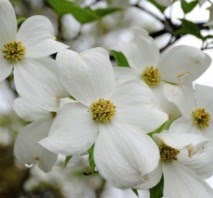Step 1
 Success with flowers starts with choosing plants wisely. Look for short, stocky plants with few flowers and healthy, disease-free foliage. Avoid plants that are spindly, discolored, or wilted.
Success with flowers starts with choosing plants wisely. Look for short, stocky plants with few flowers and healthy, disease-free foliage. Avoid plants that are spindly, discolored, or wilted.Step 2
 Knock the plant from its pot, keeping as much of the rootball as you can. If the plant's roots are heavily entwined, you may want to cut through them with a knife or pull them apart with your hand. This encourages them to spread out into the surrounding soil.
Knock the plant from its pot, keeping as much of the rootball as you can. If the plant's roots are heavily entwined, you may want to cut through them with a knife or pull them apart with your hand. This encourages them to spread out into the surrounding soil.Step 3
 Although the flowers are pretty, it's best to pinch them off. Right now, the plant needs to put its energy into developing a good root system, not flowering. Pinching encourages healthier plants with more flowers later on
Although the flowers are pretty, it's best to pinch them off. Right now, the plant needs to put its energy into developing a good root system, not flowering. Pinching encourages healthier plants with more flowers later onStep 4
 Prepare the bed with a spade, working in at least 1 inch of organic matter. (Each year, add compost, sphagnum peat moss, rotted manure, and other organic matter to keep the soil in good condition or to improve it. Or top a bed each year with a 2-inch layer of compost.) The soil should be loosened to a depth of at least 12 inches for annuals; 18 inches for perennials. Smooth the soil with a ground rake. When the bed is ready, plant the flowers at the same soil level they were in the container.
Prepare the bed with a spade, working in at least 1 inch of organic matter. (Each year, add compost, sphagnum peat moss, rotted manure, and other organic matter to keep the soil in good condition or to improve it. Or top a bed each year with a 2-inch layer of compost.) The soil should be loosened to a depth of at least 12 inches for annuals; 18 inches for perennials. Smooth the soil with a ground rake. When the bed is ready, plant the flowers at the same soil level they were in the container.Step 5
 Mulch the bed with 1 to 3 inches of aged wood chips (fresh chips stunt growth), bark, grass clippings, pine needles or any other organic mulch. Gravel or stone tends to create too hot and dry a climate for most annuals and perennials. Mulch suppresses weeds, conserves moisture, and prevents many soil-borne diseases.
Mulch the bed with 1 to 3 inches of aged wood chips (fresh chips stunt growth), bark, grass clippings, pine needles or any other organic mulch. Gravel or stone tends to create too hot and dry a climate for most annuals and perennials. Mulch suppresses weeds, conserves moisture, and prevents many soil-borne diseases.












No comments:
Post a Comment